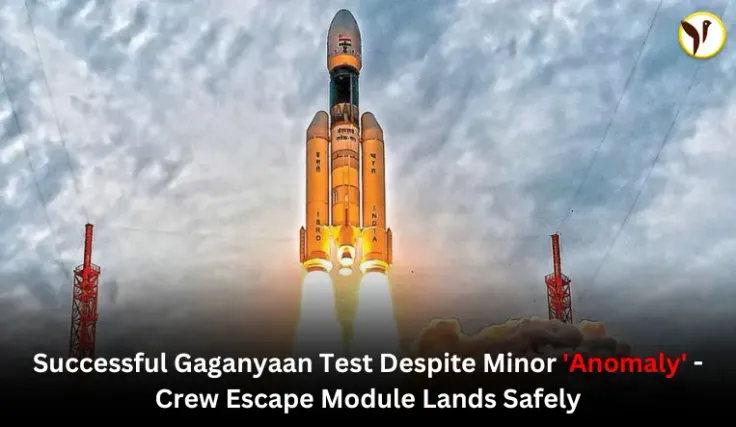In a significant milestone for India's ambitious space program, the Indian Space Research Organization (ISRO) executed a successful unmanned test flight today from Sriharikota, marking the first step towards the Gaganyaan mission, which seeks to send astronauts into Low Earth Orbit at 400 kilometers.
This critical test, referred to as the flight abort test, was designed to evaluate the efficiency of the vehicle's crew escape system, a crucial component for astronaut safety in case of emergencies. It also aimed to validate the vehicle's secure landing in the Bay of Bengal following the rocket launch.
Originally scheduled for liftoff from the first launch pad at 8 am, the mission faced a minor setback when the countdown paused just five seconds before the scheduled launch time. ISRO promptly identified and addressed the issue, successfully completing the test at 10 am.
The Test Vehicle D1 mission serves as a precursor to the Gaganyaan program, which has the ambitious goal of sending humans into space, allowing them to orbit the Earth at a Low Earth Orbit altitude of 400 kilometers for a three-day mission before safely returning to Earth.
India is on track to showcase its human spaceflight capabilities with the upcoming Gaganyaan mission, slated for a 2024 launch. Moreover, the country has set its sights on establishing a space station by 2035, and concurrently, ISRO is actively pursuing projects including a Venus orbiter and a Mars lander.
Also read: ISRO Introduced Vyom Mitra after it's achievement of Chandrayaan 3







